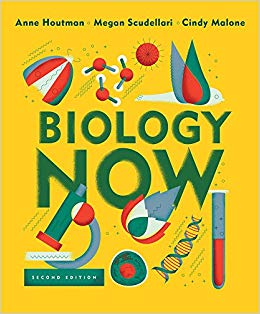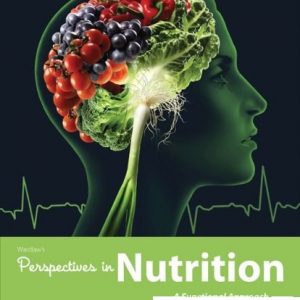Test Bank for Biology Now (Second Edition) Second Edition

Product details:
- ISBN-10 : 039363180X
- ISBN-13 : 978-0393631807
- Author: Anne Houtman
Brief chapters are written like science news articles, combining compelling science with intriguing stories. The Second Edition features NEW stories on exciting topics such as CRISPR and the human microbiome, and expanded coverage of the course’s most important content areas. Biology Now is written by an author team made up of a science writer and two experienced teachers. Expanded pedagogy in the book and online encourages students to think critically and engage with biology in the world around them.
Table contents:
Case 4 Malaria: Coevolution of Humans and a Parasite
22. Species and Speciation
23. Evolutionary Patterns: Phylogeny and Fossils
Addition of the effect of mass extinctions on species diversity
24. Human Origins and Evolution
Updated discussion of the relationship between Neanderthals and Homo sapiens, as well as Denisovans
25. Cycling Carbon
Significantly revised link between the carbon cycle, biodiversity, and ecology
Case 5 The Human Microbiome: Diversity Within
26. Bacteria and Archaea
27. Eukaryotic Cells: Origins and Diversity
New branching order of the eukaryote tree in this chapter and onward to reflect new research in the past three years
28. Being Multicellular
Case 6 Agriculture: Feeding a Growing Population
29. Plant Structure and Function: Moving Photosynthesis onto Land
A new discussion of plant nutrients
30. Plant Reproduction: Finding Mates and Dispersing Young
An enhanced discussion of seeds, including the development of the embryo and dispersal structures
New coverage of the genetic advantages of alternation of generations
Addition of apomixis
31. Plant Growth and Development
The section on the role of plant sensory systems in the timing of plant reproduction has been moved from Chapter 30 to Chapter 31.
32. Plant Defense: Keeping the World Green
33. Plant Diversity
Completely revised explanation of the basis for angiosperm diversity
Plant and animal diversity chapters (Chapters 33 and 44) now include a brief review of organismal form and function, allowing these chapters to be used on their own or before the physiology chapters.
34. Fungi: Structure, Function, and Diversity
Case 7 Predator-Prey: A Game of Life and Death
Brief descriptions of unfamiliar organisms and the major groups of organisms have been layered into the animal physiology chapters, to make it easier to teach physiology before diversity (Chapters 35-42).
35. Animal Nervous Systems
36. Animal Sensory Systems and Brain Function
37. Animal Movement: Muscles and Skeletons
38. Animal Endocrine Systems
39. Animal Cardiovascular and Respiratory Systems
A new section on the composition of blood
40. Animal Metabolism, Nutrition, and Digestion
41. Animal Renal Systems: Water and Waste
42. Animal Reproduction and Development
New diagrams of hormone feedback loops in the menstrual cycle
43. Animal Immune Systems
A new introduction to the immune system
Case 8 Biodiversity Hotspots: Rain Forests and Coral Reefs
44. Animal Diversity
A new discussion of nematodes
Introduction of a newly-discovered species, Dendrogramma enigmatica
45. Animal Behavior
46. Population Ecology
A new population growth equation
47. Species Interactions, Communities, and Ecosystems
A new discussion of facilitation
An expanded discussion of herbivory
A new example of microbial symbionts
A new discussion of biodiversity and its importance
48. Biomes and Global Ecology
An entirely new chapter on physical processes that underlie different biomes
-
- Differential solar energy around the globe and seasonality
-
- Wind and ocean currents
-
- Effects of circulation and topography on rainfall
-
- Expanded discussion of terrestrial biomes
-
- Freshwater and marine biomes
-
- Integration of concepts of biogeochemical cycles from Chapters 25 and 26 with ecological concepts
-
- Global patterns of primary production
-
- Global biodiversity
49. The Anthropocene: Humans as a Planetary Force
People also search:
biology now second edition pdf
biology now 2nd edition pdf free
biology now book
biology second semester review
biology now with physiology 2nd edition





